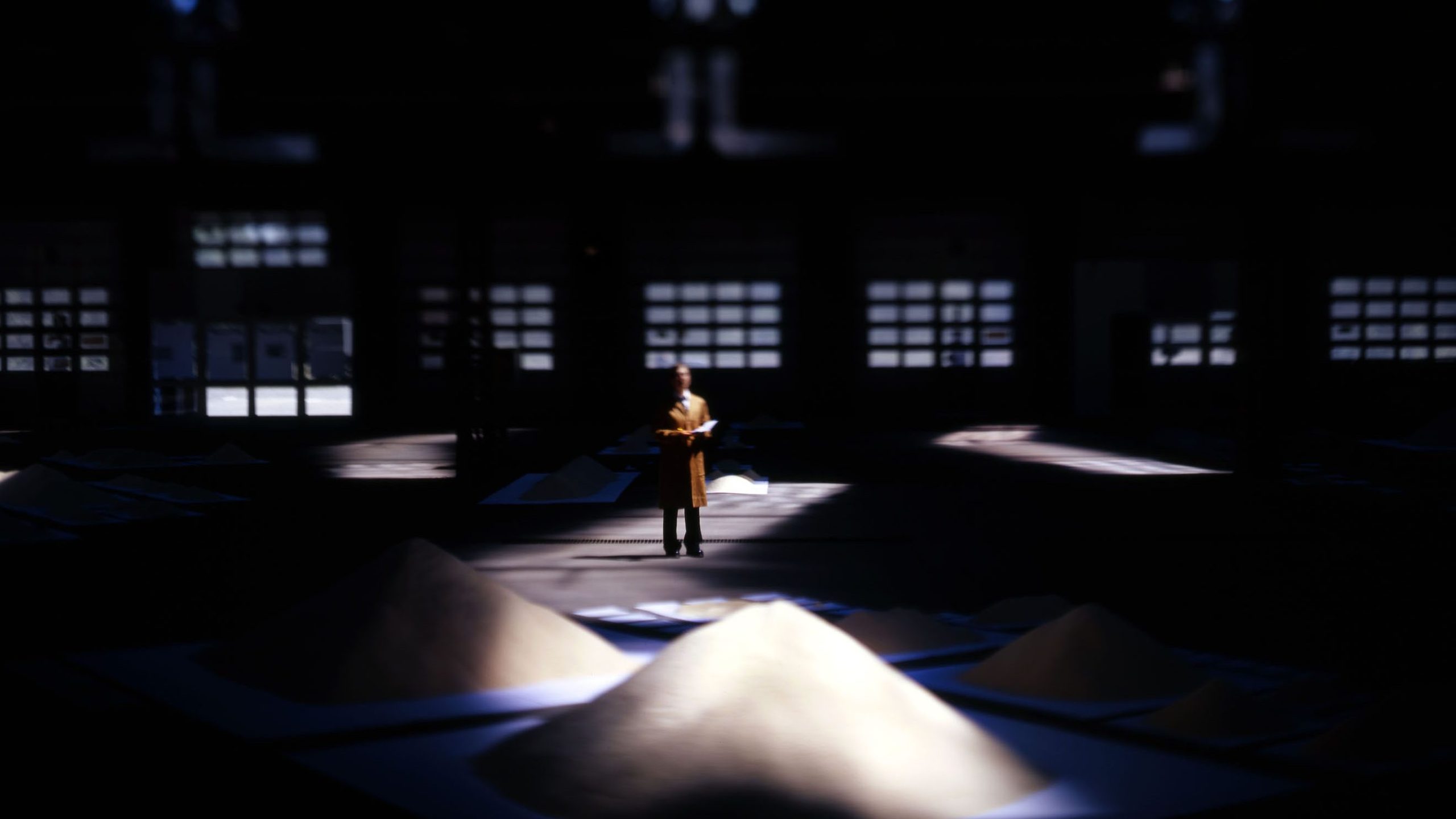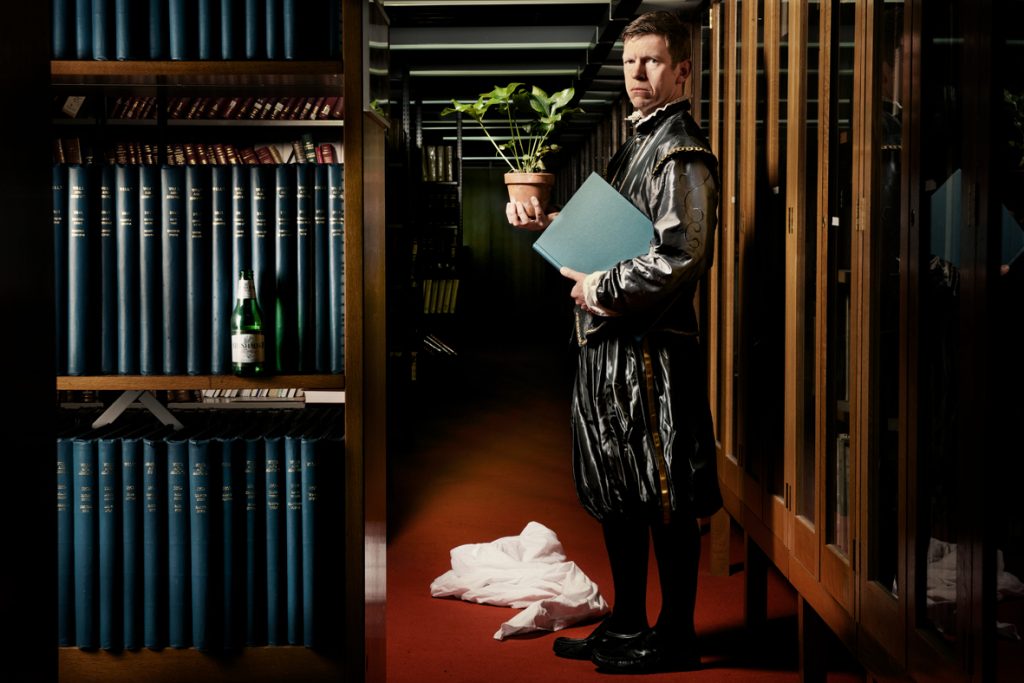
The first panel session for the Re-Make strand of Performing Documents at Arnolfini in Bristol started with a talk by Robin Deacon, who mentioned experimenting with an honest website that doesn’t serve as a place to polish up the artist’s image. I spoke next, what follows is a polished up version of what I should have said if I’d done a better job of the presentation.
In 1998 Birmingham City Council’s Towards The Millennium Festival was approaching its endgame. The premise of this decade long festival was simple, if tricky to explain, each year arts organisations within the city were encouraged to re-examine art works created in a particular decade of the twentieth century. There were furrowed brows around the large conference table. The 1999 program was looking very thin, there didn’t seem to be much appetite for taking on seminal works of the 1980s and 90s amongst the gathered big wigs of big establishment venues. Whilst reflecting on how it tends to take a long time for works to gain their place the cannon of restaged works, I came to think about how, if you regularly stage works by Shakespeare and Chechov, Mozart and Bach then 1980 could easily feel like yesterday. By the same token in our world of contemporary theatre, with its rapid turn-over of generations, 1980 felt like another era. Another era and yet perhaps the first era in which video recording equipment was cheap enough for small companies to document performances in which movement, music and design are as likely to form ‘the text’ as a written script. I formulated these thoughts and presented them to the assembled despairing bevy of execs. The reply was immediate “what would you do and how much would it cost?”
How much? Took a few moments of guesstimating and notebook scribbling. What? Was easy: The Carrier Frequency. Studying theatre at Lancaster University we came under idiosyncratic tutelage of Pete Brooks direct from the break up of Impact Theatre Cooperative for whom he directed. As students we had been in thrall to Pete’s aesthetic but his Impact work was a thing of mystery. He rarely spoke about it but we knew it had been successful and that most successful of all had been The Carrier Frequency. Of this we knew little: performed in water, post apocalyptic, Russell Hoban’s text. The write-ups in Performance magazine were glowing. The video: inexplicable. I was most impressed that it had last been performed in Warsaw the day Chernobyl melted down. The frustrating thing was that we would never know what the show was like.
My description of The Carrier Frequency was persuading and my notebook calculation of £9K didn’t intimidate anyone around this high table, so a cheque book materialised and we were off. In retrospect I should have been worried by the logistics but fortune favours the foolish. On hearing of your project a contact quickly came up with a documentation VHS far more useful for restaging purposes than the montaged headache we’d seen before. I was slightly concerned that the show looked dull, but it was too late now. Permissions came quickly easily and generously. Russell Hoban, the author who, legend had it, had fallen out with Impact was wonderfully charming and sent scripts in the post. Graeme Miller generously dug out and re-mastered the soundtrack. The set was going to be a major compromise, we couldn’t do faux crumbling concrete, we’d just have to use scaffolding. I was anxious; I was keen that it shouldn’t look like Stan’s Cafe was trying to grab glory from the project, not least because I wasn’t entirely sure I hadn’t nicked the whole revival idea from Tim Etchells; we’d certainly had a conversation at a party during which he’d spoken of Forced Entertainment speaking about performing the show. In an attempt to turn the restaging into an homage to Impact and other lost shows by other lost companies I draw the cast from a number of companies.
The rehearsal process was simple. For the first week we used the VHS tape and the rewind button, each doppelganger performer notating the moves of their ‘original’ trying to figure out, from the grainy black and white static, what their expressions and intentions were. For the second week the VHS was banned, the doppelgangers had to take ownership of their actions, imitation had to end, it had to be our show now.
The stage for the re-staging was provided by The Crescent, an amateur theatre whose beautiful new built facility had just opened. We were to be the first outside hire. The box office staff were amazed as they started to take bookings from across the country. Our two performances were set to be very busy. Paulette Brien, our administrator had spotted the re-staging’s philosophical repercussions and suggested hosting a conference as a forum for these thoughts. Barry Matthews through the weight of Live Art magazine behind this initiative and produced a supplement to the magazine which also worked as the show’s programme – today’s conference is almost a big, grown up version of the discussion that day, and an ideal opportunity to shift the remainder of those programmes.
Spinning off from the re-staging came some reflections:
-On authors intentions. Jake asked Richard Hawley about when the rope is climbed, we’d made it an attempt to get to the BigSay speaker that booms text over the show. Richard said he was “after the women”. I prefer our version, in this small way I feel we improved on the original.
-On authenticity. When devising a show one of the consoling thoughts when you dump an idea you have been working on for days is that the idea, though not obviously manifested in the final performance will necessarily inform the performance at some deeper level, enriching it. This concern was relieved when I realised that the original show had been recast and that our VHS featured substitute performers. Reflection from a further distance has brought me closer to my original thought as I recognise that what we took as a ‘falling’ motif should have been an ‘attempt at flying’
-On copyright. We paid royalties to Russell Hoban. We gave Graeme Miller something for his time re-mastering. We got permissions but paid none of the other ‘authors’ anything. We didn’t consider that there would be a demand for a video recording of our revival so, we didn’t explore the copyright implications of this and have thus never distributed the recording.
-On getting it wrong. After our first performance one of the original cast happened to mention that in their version they had dyed the water a murky blue with fabric dye and thus emerged discoloured from the pool at the end of each performance. I was mortified. This revelation detonated the paranoia I had carried around through the whole re-staging process. How could I be expected to glean that from the video? How come no one had mentioned it before? Why wasn’t it pointed out in any of the reviews or conversations about the show? Worse, the original had no changes in lighting, we’d been lured into making spectacle of the water and smoke and long hanging tarpaulins – the original was purer, harder core, of course it was, it was made in 1984, it was the cold war, post-apocalpyic meant not global warming but nuclear winter. I knew that of course I did “Earny Warling”, “the Boom Boom hard stuff”, “Nukwar”. How had I been so stupid as to allow the thing to look beautiful, spectacular, it should be grim. I spend large swathes of the second performance unable to watch the monstrosity sat in the stairwell or a fire exit listening to the soundtrack through the breezeblock wall.
Since that re-staging we have come to regularly recast and restage our own shows in order to offer promoters a repertoire. We now watch our own shows on video and try to recall what it was we did back then (though it is usually only 6 or 12 months ago). Ironically, we catch ourselves treating these documentation videos as definitive and thus come perilously close to re-enacting performance errors as if they are ‘the text’. Who knows how many such errors we faithfully re-restaged in our The Carrier Frequency.
It was a curious experience taking on The Carrier Frequency. For many who saw the original the piece seemed to have acquired a legendary status and the notion of another company poking at the legend to reanimate it felt uncomfortable. Maybe there was a sense of ownership; that the piece somehow belonged to those who saw it the first time around. Perhaps there was an anxiety that in the cold light of 1999 what had captured the imagination in 1984 may appear dated or – by sheer weight of influence – clichéd. Maybe it was just my paranoia and at worst the world was ambivalent.
Ultimately no one need to have worried. The show held up well. Those who saw the original could say itt was better. Those who were in the original could have those memories re-triggered. Those who missed it could get a flavour of it. Russell Hoban burst into our dressing room to embrace semi naked soaking wet performers. Doppelgangers spoke to their ‘originals’ in the bar – strangely bonded. We had the chance to ask the burning question “how on earth did you stop the pool leaking and prevent it flooding every venue you visited?” and we had the opportunity to have the reassuring reply “we didn’t, it always leaked”.
Our re-staging is now thirteen years in the past. At the time of re-staging the last performance of The Carrier Frequency was thirteen years in the past. From this distance it is now clear why this was the right show to re-stage in this way, the show’s very premise is that after nuclear war humanity’s organising ‘text’ has been destroyed. The people we see on stage are clutching at fragments of that shattered text, trying to put them together again, trying to make them cohere, much as we had with our grainy VHS. From this distance my errors look different too. I now wonder if the error wasn’t that our version wasn’t close enough to the original – too bright, too clear, too clean – perhaps it wasn’t far enough from the original. Perhaps the true re-creation of The Carrier Frequency happened a few weeks later at Phoenix Arts Centre with students of De Montfort University. Be Proud Of Me was a sprawling messy show in which a cast of sixteen undergraduates attempt to stage Star Wars as if they had never seen the original but believed it to be a sacred text.
During the actual talk I somehow managed to mention that Reckless Sleepers are restaging Schroedinger’s Box a show they made 14 years ago.
I also mentioned the inspired project by New Guide to Opera whose piece See You Tomorrow was an attempt to restage the DDR’s television schedule from June 1954.
Time constraints meant I couldn’t retell an excellent anecdote in which Forced Entertainment watch students restage one of their shows with only the text for guidance.
James Yarker 15.9.12




